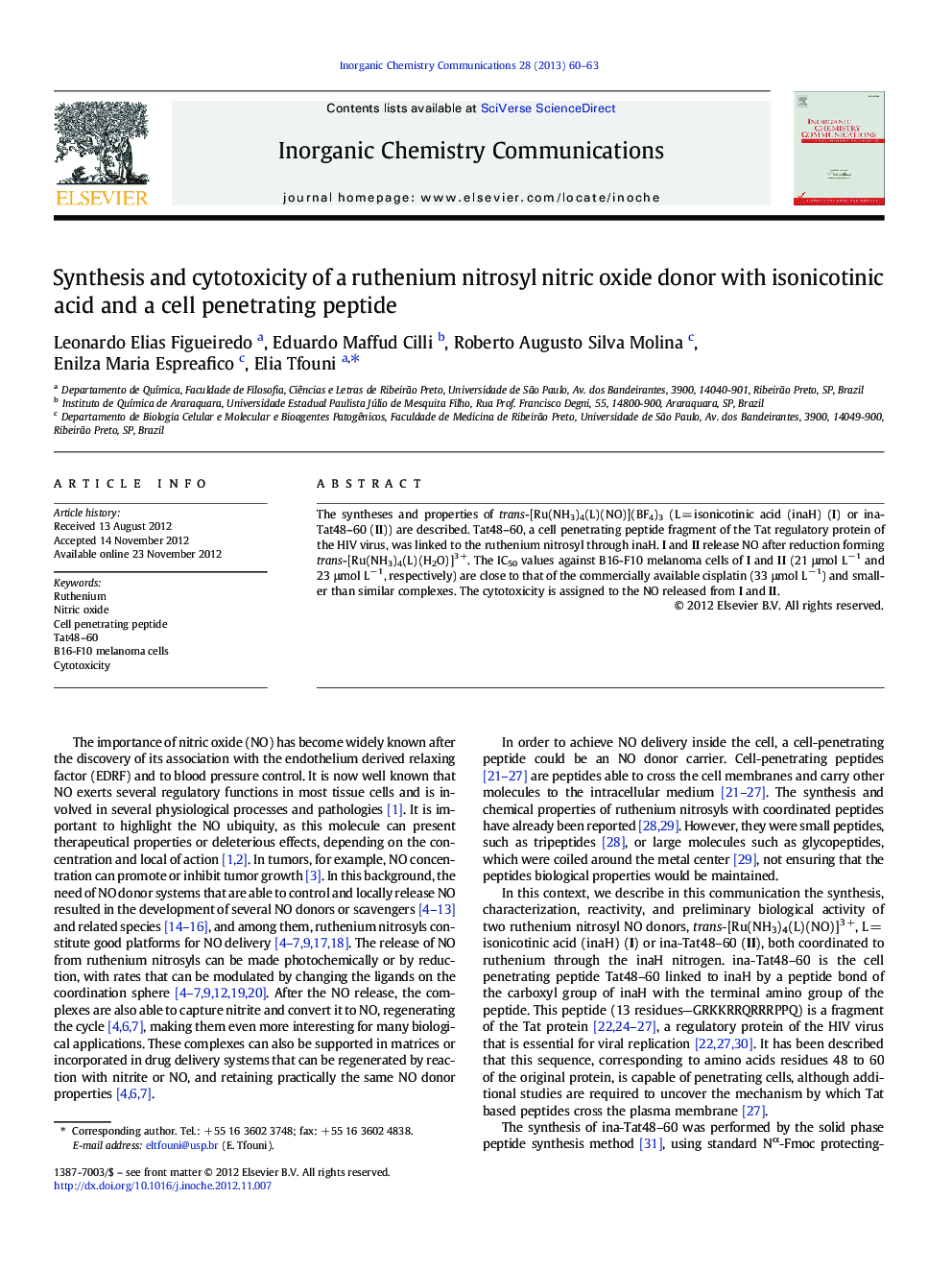| Article ID | Journal | Published Year | Pages | File Type |
|---|---|---|---|---|
| 1302028 | Inorganic Chemistry Communications | 2013 | 4 Pages |
The syntheses and properties of trans-[Ru(NH3)4(L)(NO)](BF4)3 (L = isonicotinic acid (inaH) (I) or ina-Tat48–60 (II)) are described. Tat48–60, a cell penetrating peptide fragment of the Tat regulatory protein of the HIV virus, was linked to the ruthenium nitrosyl through inaH. I and II release NO after reduction forming trans-[Ru(NH3)4(L)(H2O)]3 +. The IC50 values against B16-F10 melanoma cells of I and II (21 μmol L− 1 and 23 μmol L− 1, respectively) are close to that of the commercially available cisplatin (33 μmol L− 1) and smaller than similar complexes. The cytotoxicity is assigned to the NO released from I and II.
Graphical abstractTat48–60 (GRKKRRQRRRPPQ) is a cell penetrating fragment of the HIV virus Tat protein. The cytotoxicity of the complex against B16-F10 melanoma cells is similar to that of cisplatin.Figure optionsDownload full-size imageDownload as PowerPoint slideHighlights► The Tat48-60 cell penetrating peptide was linked to a ruthenium nitrosyl. ► Nytrosil complexes with isonicotinic acid or peptide release NO after reduction. ► The complexes are as toxic as cisplatin against B16F10 melanoma cells. ► The complexes induce 51% (I) and 38% (II) apoptosis at 1 × 10− 4 mol L-1 concentration. ► The cytotoxicities, assigned to NO release, are higher than similar nytrosils.
